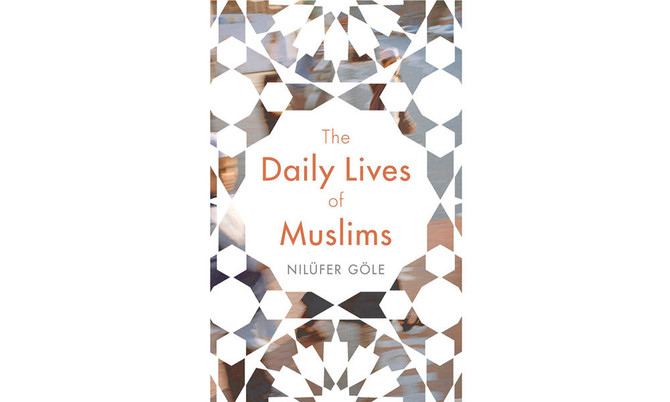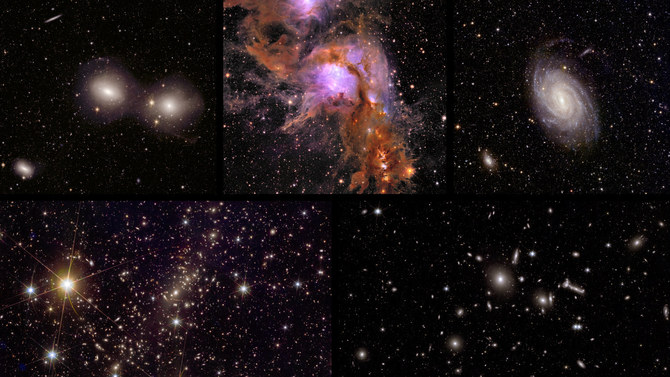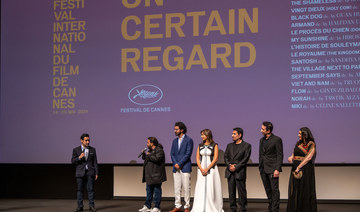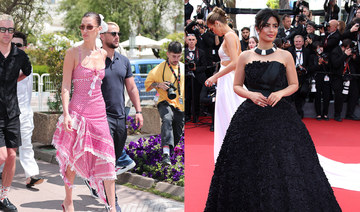It is estimated that 20 million Muslims reside in Europe mostly as a result of immigration due to war, oppression or economic misery. Muslim migrants have become part of everyday life in European cities.
In contrast to their parents, the young generation of Muslims does not see Islam as an obstacle to living in Western societies. But the visibility of Islam in public life engenders increasing feelings of resentment and rejection in European countries.
Nilufer Gole, a Turkish sociologist and director of the Paris-based, School for Advanced Studies in the Social Sciences, sheds light on the controversies surrounding European Muslims, revealing the inherent contradictions and dilemmas of European identities. “The Daily Lives of Muslims” helps us understand the emergence of new faces of Islam fighting to be recognized in universities, in public debates or in parliament and it also brings the voices of a neglected majority of ordinary Muslims into the debate.
The question of Islam in Europe has been on the political agenda for the last 25 years. “The return to national identity, the affirmation of the specificity of European cultural values, the necessity to defend the superiority of Western civilization, all this has had as a consequence the abandoning of any approach based on multiculturalism and cultural relativism,” wrote Nilufer Gole.
The criticism of multiculturalism has given way to identity debates and Islamophobia, which have triggered the emergence of neo-populist movements in Europe. Marine Le Pen, has just come in second in the first round of the French presidential elections. Geert Wilders and his Party for Freedom have shaken the very roots of multicultural heritage in the Netherlands.
In 2011, Anders Behring Breivik went on a killing spree at a youth camp in Norway to denounce European institutions, government parties, the media and intellectuals who have allowed a culture of tolerance that opened the doors to Islam. Muslims are no longer welcome unless they believe in the values of the dominant culture of reference. As a result, new Muslim voices are emerging; eloquent, intelligent and skilled in the art of discussion, they are the faces of European Islam.
This is the case with Tariq Ramadan who advocates the idea of a European Islam. A Swiss citizen, he speaks perfect French and English, teaches at Oxford University in England and heads a specialized center for Islamic legislation and ethics in Doha, Qatar.
Tariq Ramadan criticizes the West’s pretension to hold the monopoly on the universal; he believes in the notion of a “shared universal,” which exists “in the intersections of commonality rather than in the integration of differences.” He also thinks that it is not incompatible to be a Muslim and to live in Europe. Tariq Ramadan is nurturing a new class of European Muslims, “Intervening as they do as political actors, public intellectuals, theologians and experts, it is difficult to put them into one category. They are moving the divide between intellectuals and Islam and participating in making Islam the religion of reference in public debates,” wrote Gole.
The majority of Muslims, between the ages of 19 and 45, belong to the middle classes. They practice their faith by following religious tenets in their daily lives and thus give Islam visibility in the public sphere. Their demands for the construction of mosques, wearing the veil or consuming halal food show that they are not only politically active but also familiar with juridical and administrative rules.
Wearing a scarf is a powerful image of Islam in the West where it is often viewed as a symbol of oppression and a rejection of progressive values. However, motives for wearing the veil in Europe follow a different logic. The women interviewed for this book explain their reasons for veiling as a way of strengthening their faith.
Salma was born in Denmark to Syrian parents. Her father is an engineer and her mother a lab technician. She is studying for a Ph.D. at the University of Copenhagen and said: “Before wearing the hijab, I was already saying prayers five times a day, so it came on naturally. Wearing the hijab is important to me because I want to do what Allah asks me to do. It’s an act of devotion that brings me closer to God.”
As for Tuba, born in Amsterdam to Turkish parents, she did not start wearing the veil as a tradition. “I wear it consciously,” she said, “and it makes me happy. No one makes me wear it... But the veil is a part of me that I love. I don’t think it is the only thing that represents Islam, but for me my headscarf is a part of my happiness living in Islam.”
Today, young veiled women are educated, and they aspire to work and affirm their place in public life. If their parents practiced their religion more discreetly, their children are proud to show their faith.
In Europe, there are also female converts to Islam who wear the hijab like Maryam, who is Norwegian, and lives alone with her 11-year-old daughter. She explains that her conversion to Islam was due to a spiritual quest and that wearing the headscarf is a sign of belonging to the Muslim community: “I don’t think I am a better Muslim with the headscarf but I like feeling accepted and respected.”
The veil in Europe is not only worn by immigrant workers but by a diverse group of women who want to have a place in public life and are also reinventing Muslim femininity and fashion.
“The visibility of Islam and the veil have lost their troubling aspect and cease to be ostentatious, entering instead into the field of commonality, the perceptible experience of ordinary citizens,” writes Gole.
Shariah like the veil is often misunderstood in Europe. Shariah refers to a group of prescriptions based on the Qur’an, the prophetic traditions and the Muslim law that Muslims must follow.
In 2008, Rowan Williams, Archbishop of Canterbury made a famous speech about the necessity of finding a “constructive arrangement” with some aspects of Islamic law. This caused a heated polemic. Williams interprets the Shariah as the expression of universal principles of Islam instead of comparing it to a system of rigid codification. Despite the political debate concerning Shariah in the United Kingdom, Islamic law has found a field of application with the Shariah Councils and Muslim Arbitration Tribunal.
The majority of these Islamic councils operate within mosques and these religious authorities work in the service of the Muslim community and rule on legal questions such as, for example, the authentication of acts of marriage and divorce or commercial transactions. These councils also rule on cases regarding alimony, child custody and inheritance.
The Muslim Arbitration Tribunals are defined as “organs of internal regulation” of Muslim communities. Faiz-ul-Aqtab Siddiqi, who is in charge of the Muslim Arbitration Tribunals, believes that his knowledge of Islamic law helps him make proposals that will allow British law to evolve and his knowledge of British law helps him adapt Islamic law to the British context.
“I think that the two together can create a new synergy,” Siddiqi said. “Laws have a spirit, and the spirit of the law remain the same.”
This book shows that in Europe, Muslims from all walks of life practice their religion openly. This public visibility of Islam represents the Muslims’ resolve to be integrated in the society. Although the major symbols of this visibility, such as mosques and veils, are still creating a polemic, Muslims want to take part in the political debate and in the creation of policies. “Muslims thus prove their citizenship and display their singularity in public spaces,” writes Gole.
This new form of citizen engagement gave birth to the “Not In My Name” campaign. Founded by British Muslims, this movement denounced the beheadings of European citizens committed in Iraq and Syria.
“This is where Europe’s exception resides, in its creative freedom, in its propensity to invent itself with others, in the act of interweaving the social fabric. Like a magic carpet, Europe shows a horizon of possibility with its Muslims,” concluded Nilufer Gole.
As Muslims in Europe are increasingly subjected to a growing criticism and even rejection, this book shows how Muslim communities are fighting this current plague of anti-Muslim prejudice.
“The Daily Lives of Muslims” sheds light on the sincere desire among the majority of Muslims to play a constructive political and social role in their respective countries.
Book Review: The budding strength of Europe’s disenfranchised
Book Review: The budding strength of Europe’s disenfranchised

Kodi, star of ‘Dog on Trial,’ takes home Cannes’ top dog prize

- The Griffon mix was praised for his “breathtaking” performance as Cosmos, a guide dog for a visually impaired man
- Xin, the greyhound who made a star turn in Chinese director Guan Hu’s “Black Dog,” was awarded the Palm Dog’s Grand Jury Prize
CANNES, France: There was lots of tail-wagging and face-licking as Kodi, this year’s winner of the Palm Dog, the canine equivalent of the Cannes Film Festival’s top prize, went up to receive his red collar for the French comedy “Dog on Trial” on Friday.
The Griffon mix was praised for his “breathtaking” performance as Cosmos, a guide dog for a visually impaired man, who goes on trial over an attack, in a case whose outcome could mean death.
“This film is very significant because it not only explores the bond between humans and dogs but it takes a satirical, comedic but quite profound look at the way that we domesticate dogs and the way that we relate to dogs, and the way our justice system relates to dogs,” said critic and jury member Anna Smith.
Xin, the greyhound who made a star turn in Chinese director Guan Hu’s “Black Dog,” was awarded the Palm Dog’s Grand Jury Prize.
Xin was in Cannes to don the red collar for the film about an ex-convict tasked with ridding his town of stray dogs who befriends one of them.
The unofficial awards show, which was created in 2001, is now in its 24th edition.
Kodi succeeds last year’s winner, Messi from Justine Triet’s “Anatomy of a Fall,” who converted his star power into a French TV show in which he, through the voice of French humorist Raphael Mezrahi, interviews people at this year’s festival.
Other past winners include Brandy, a pit bull belonging to Brad Pitt’s character in “Once Upon a Time in Hollywood” and Tilda Swinton’s spaniels, who co-starred with her in a film directed by Joanna Hogg.
Massive cradle of baby stars revealed in new space telescope images

- The European Space Agency released the photos from the Euclid observatory on Thursday
- Euclid will spend the next several years observing billions of galaxies covering more than one-third of the sky
CAPE CANAVERAL, Florida: A massive cradle of baby stars has been observed in new detail by a European space telescope, adding to its celestial collection of images.
The European Space Agency released the photos from the Euclid observatory on Thursday.
They were taken following the telescope’s Florida launch last year as a warm-up act to its main job currently underway: surveying the so-called dark universe.
From its perch 1 million miles (1.6 million kilometers) from Earth, Euclid will spend the next several years observing billions of galaxies covering more than one-third of the sky.
The shape and size of all these galaxies can help scientists understand the mysterious dark energy and dark matter that make up most of the universe.
“Euclid is at the very beginning of its exciting journey to map the structure of the universe,” the space agency’s director general, Josef Aschbacher, said in a statement.
Among the newly released pictures is one of an enormous cradle of baby stars some 1,300 light-years away known as Messier 78. A light-year is 5.8 trillion miles. Euclid’s infrared camera peered through the dust enveloping the stellar nursery, revealing new regions of star formation, according to ESA.
Daily marijuana use outpaces daily drinking in the US, a new study says

- In 2022, an estimated 17.7 million people reported using marijuana daily or near-daily compared to 14.7 million daily or near-daily drinkers,
- The number of daily users suggests that more people are at risk for developing problematic cannabis use or addiction, says researcher
For the first time, the number of Americans who use marijuana just about every day has surpassed the number who drink that often, a shift some 40 years in the making as recreational pot use became more mainstream and legal in nearly half of US states.
In 2022, an estimated 17.7 million people reported using marijuana daily or near-daily compared to 14.7 million daily or near-daily drinkers, according an analysis of national survey data. In 1992, when daily pot use hit a low point, less than 1 million people said they used marijuana nearly every day.
Alcohol is still more widely used, but 2022 was the first time this intensive level of marijuana use overtook daily and near-daily drinking, said the study’s author, Jonathan Caulkins, a cannabis policy researcher at Carnegie Mellon University.
“A good 40 percent of current cannabis users are using it daily or near daily, a pattern that is more associated with tobacco use than typical alcohol use,” Caulkins said.

The research, based on data from the National Survey on Drug Use and Health, was published Wednesday in the journal Addiction. The survey is a highly regarded source of self-reported estimates of tobacco, alcohol and drug use in the United States.
From 1992 to 2022, the per capita rate of reporting daily or near-daily marijuana use increased 15-fold. Caulkins acknowledged in the study that people may be more willing to report marijuana use as public acceptance grows, which could boost the increase.
Most states now allow medical or recreational marijuana, though it remains illegal at the federal level. In November, Florida voters will decide on a constitutional amendment allowing recreational cannabis, and the federal government is moving to reclassify marijuana as a less dangerous drug.
Research shows that high-frequency users are more likely to become addicted to marijuana, said Dr. David A. Gorelick, a psychiatry professor at the University of Maryland School of Medicine, who was not involved in the study.
The number of daily users suggests that more people are at risk for developing problematic cannabis use or addiction, Gorelick said.
“High frequency use also increases the risk of developing cannabis-associated psychosis,” a severe condition where a person loses touch with reality, he said.
Russian court fines man for hair dyed in colors of Ukrainian flag, OVD-Info says

- Photographs of Stanislav Netesov posted online show the 25-year-old’s close-cropped hair colored bright blue, green and yellow
- Netesov was found guilty of discrediting the armed forces on May 3, an online court notice shows, although it does not specify a fine
LONDON: A Russian man who had his hair dyed in some of the colors of the Ukrainian flag has been fined 30,000 roubles ($330) by a court for “discrediting” the Russian army, rights group OVD-Info reported on Monday.
Photographs of Stanislav Netesov posted online show the 25-year-old’s close-cropped hair colored bright blue, green and yellow. Blue and yellow are the colors of the Ukrainian flag.
More than 20,000 people have been detained for their anti-war stance since the start of Moscow’s full-scale invasion of Ukraine in February 2022, with over 900 people charged with criminal offenses.
Netesov was found guilty of discrediting the armed forces on May 3, an online court notice shows, although it does not specify a fine.
In court, Netesov denied his hair color was meant as a statement of protest, saying that he does not support either Ukraine or the Russian army, independent news outlet Mediazona reported. He said he has dyed his hair bright colors for years.
Netesov could not be reached for comment.
The case against the Muscovite began in late April, when he was attacked by unknown people while returning home from work late at night.
The assailants stole his mobile phone and knocked out one of his teeth, Netesov told OVD-Info, which assists those targeted for opposing the war.
When he went to the police to file a report, officers noticed his hair and charged him under the “discrediting” statute, Mediazona reported.
“The aforementioned visual propaganda clearly expressed a negative attitude toward the Armed Forces of the Russian Federation,” Mediazona cited the police report as saying.
Officers also gave Netesov a summons to report to a military enlistment office. He then revealed to them he was a transgender man, after which they canceled the summons, Mediazona said.
Swarmed with tourists, Japan town blocks off viral view of Mt. Fuji

- The mass of visitors and their refusal to obey rules on littering and parking had become a nuisance and traffic hazard
FUJIKAWAGUCHIKO, Japan: Japan’s majestic Mt. Fuji was some 700,000 years in the making, but on one sultry May morning, it was gone.
At least on one side of a busy road, views of the 3,776-meter (12,388 foot) symbol of Japan and the Lawson convenience store beneath it have vanished, as officials finished a 20-meter by 2.5-meter barrier to obstruct a photo spot that had become viral among tourists.
For locals, the mass of visitors and their refusal to obey rules on littering and parking had become a nuisance and traffic hazard.
“I’m really happy that foreigners are coming to our town,” said Kikue Katsumata, 73, a lifelong resident of Fujikawaguchiko. “But when it comes to taking pictures from the Lawson, the road is a bit narrow and it can be dangerous when people dash across without using a crosswalk.”
March and April set all-time records for visitor arrivals, driven by pent-up demand after the pandemic and as the yen’s slide to a 34-year low made Japan an irresistible bargain. That’s been good news for the economy, with travelers spending a record 1.75 trillion yen ($11.2 billion) in the first three months of 2024, according to the tourist agency.
The drastic decision to block the view of Mt. Fuji symbolizes tensions across the country as Japan reckons with the consequences of its tourism boom. The western metropolis of Osaka and the hot spring resort town Hakone are among municipalities considering new tourism taxes to deal with deluge of visitors.
Cyril Malchand, a 45-year old visitor from France, found out about the fence online and made a special trip to be among the last to take in the view. He said he empathized with the locals.
“When I see that there could be problems with people crossing the road without watching cars, I don’t find it that bad that they’re setting up that fence,” he said.





















